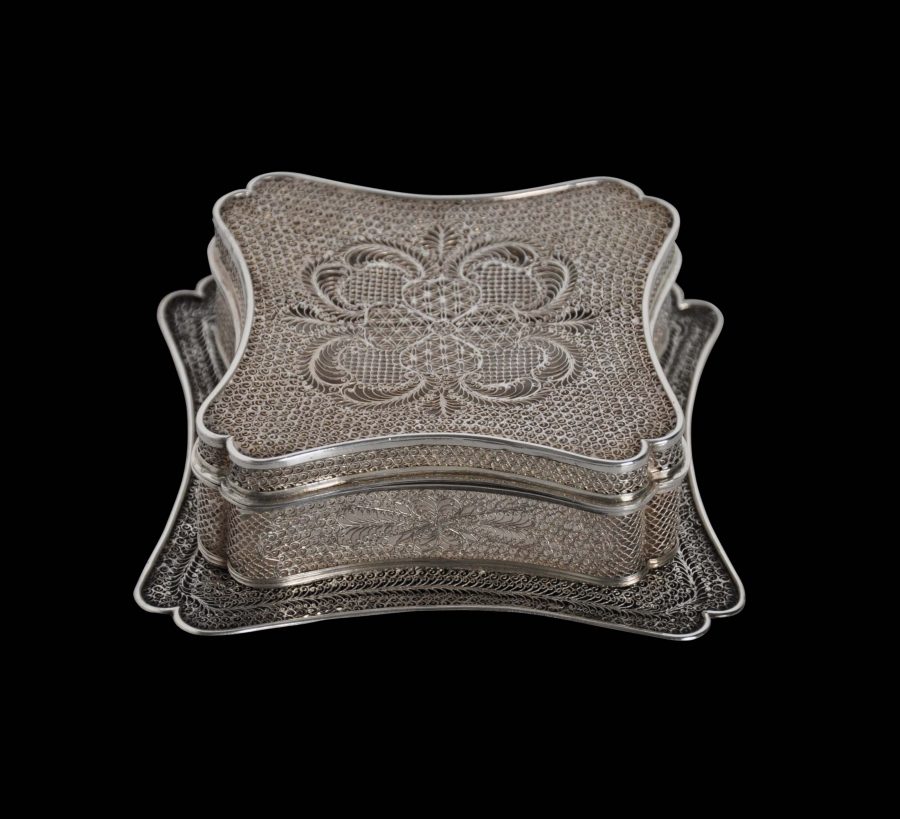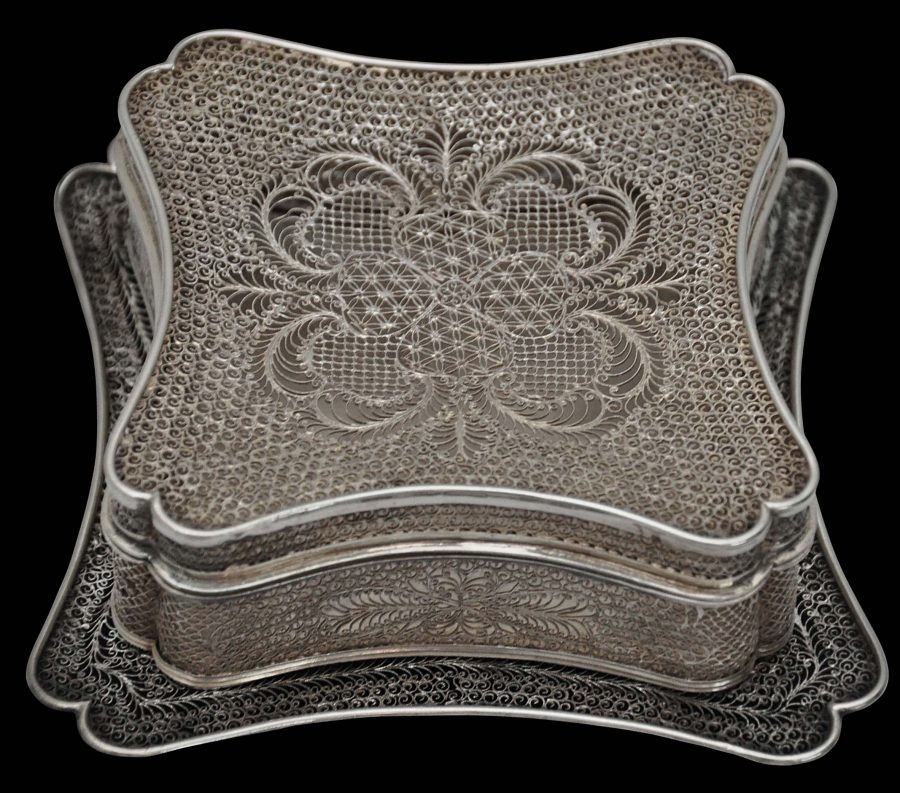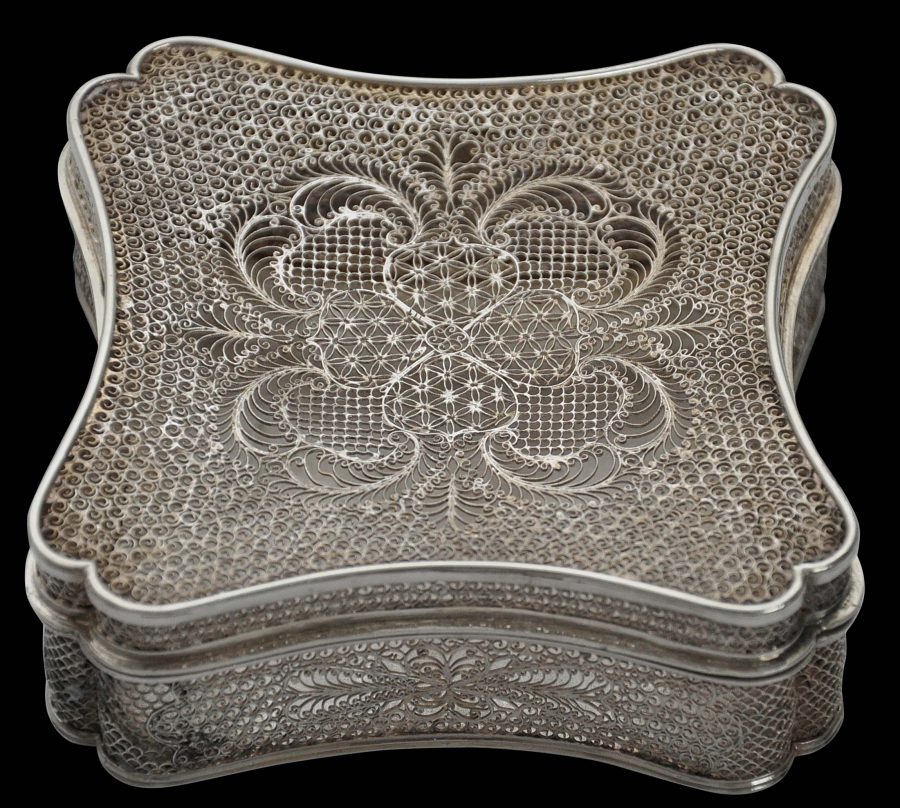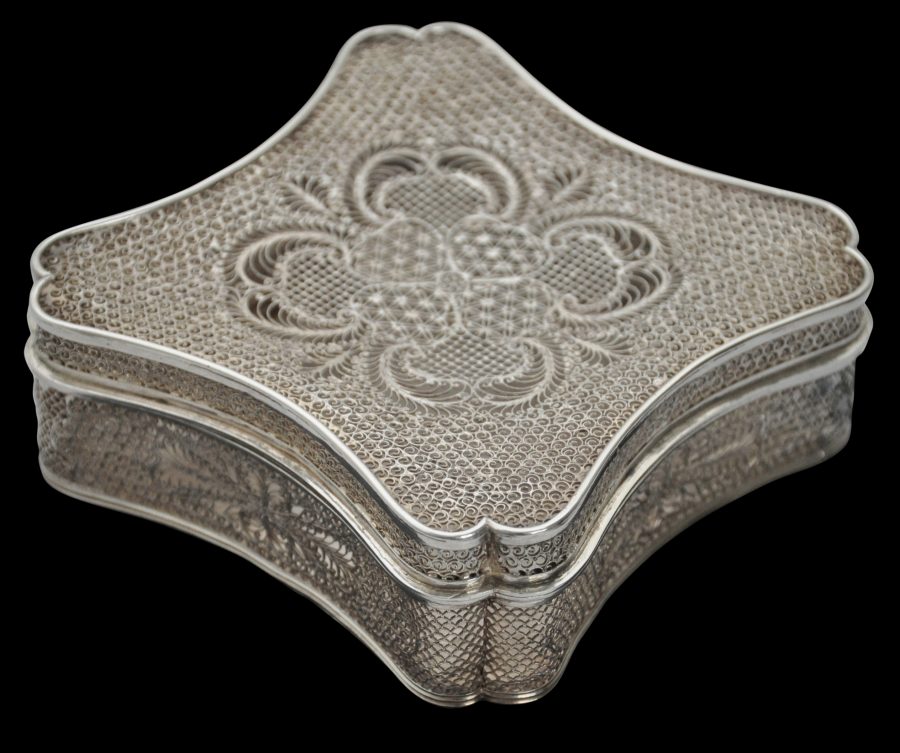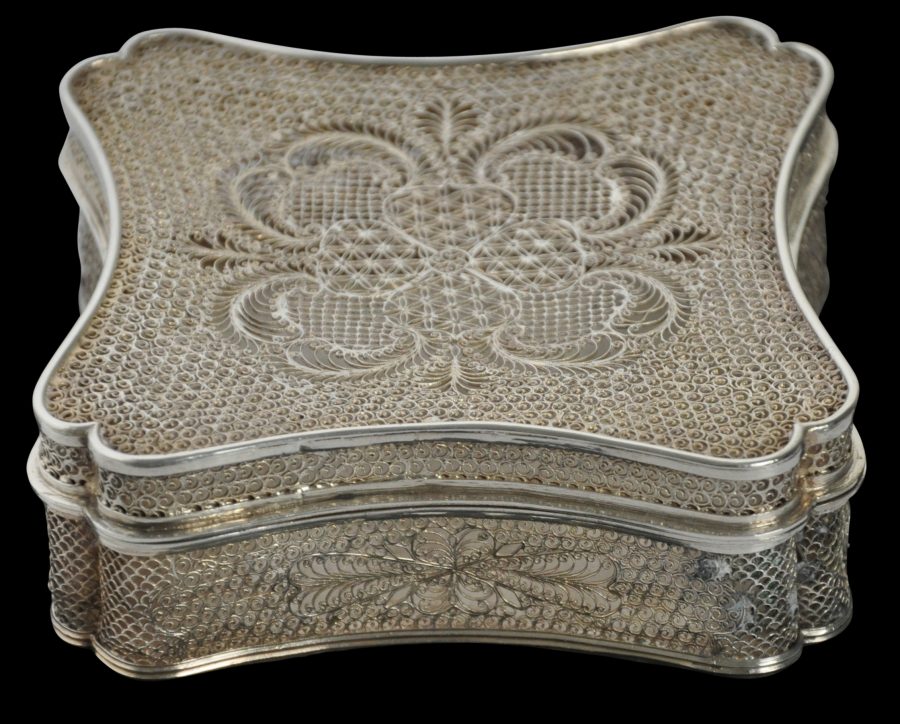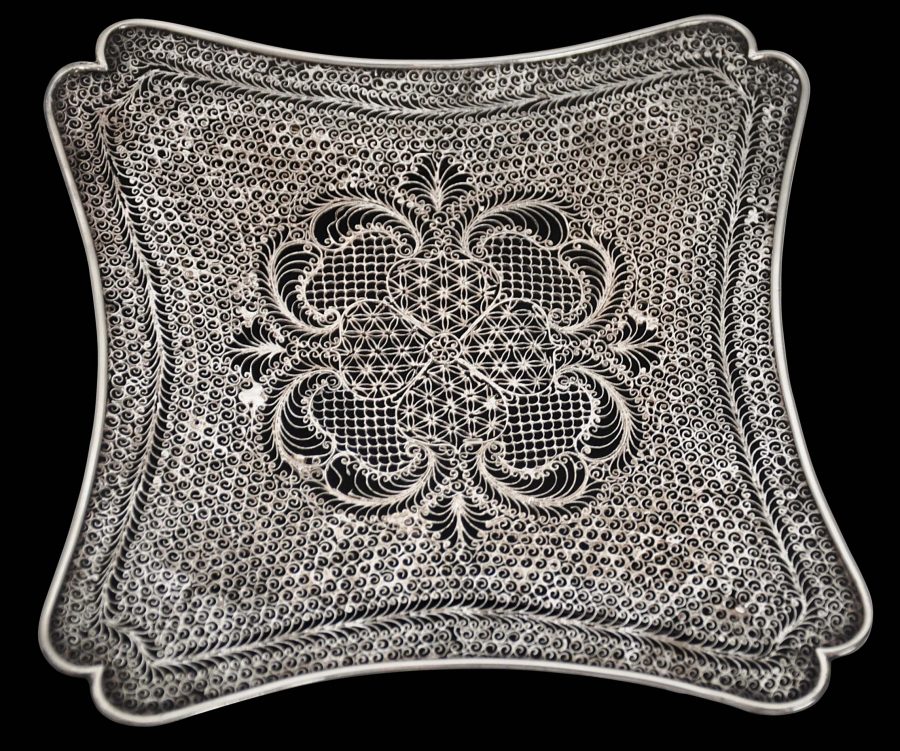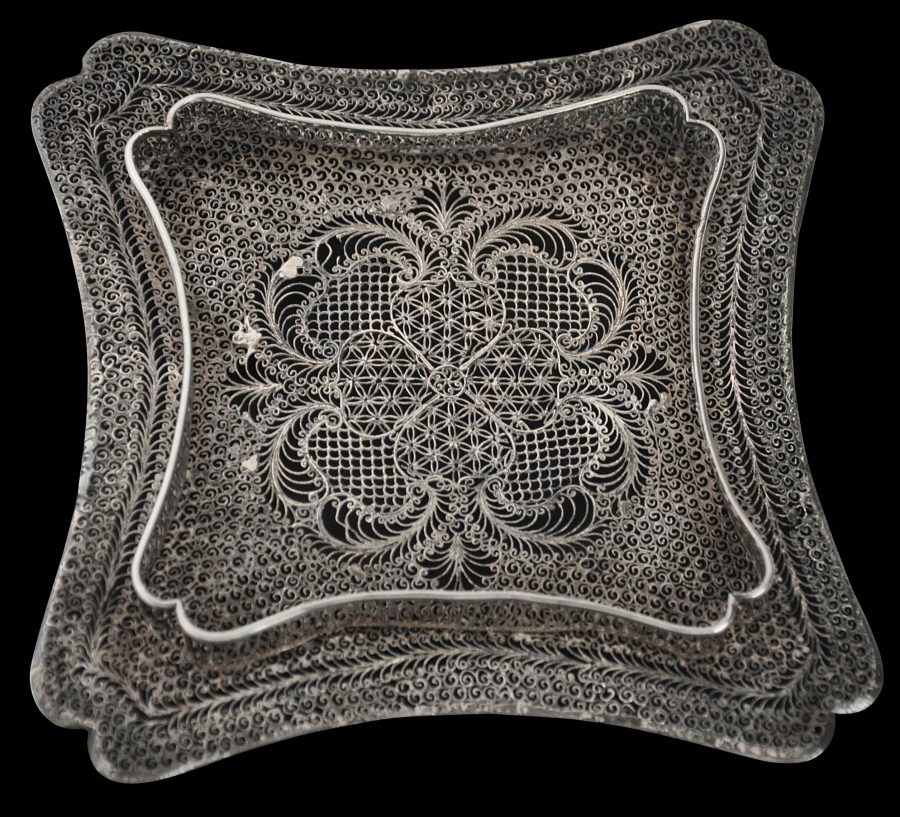This box with cover and matching tray are of square form with concave sides. Other than for the sheet silver base of the box, the set has been made in the finest possible wispy silver filigree. Remnants of gilding suggest that the box and tray originally were completely gilded or gold plated. The box is likely a product of craftsmen operating in the Dutch East Indies, either in Batavia or South Sumatra, on behalf of the Dutch East India Company (VOC).
The cover fits tightly on the box. The filigree is arranged in arrays of leaf and flower patterns. This pattern appears on the cover and four sides of the box and is mirrored on the tray on which the box sits.
Conventionally, eighteenth century filigree boxes such as this example are ascribed to China, most typically to Guangdong (Canton). Certainly some aspects of the work relates to boxes and other items of vertu that also contain elements that firmly indicate China as their place of origin – see for example a pair of square silver filigree boxes and covers illustrated in Chan (2005, p.59).
Jackson & Jaffer (2004, p.232) illustrate a silver-gilt tea caddy in London’s Victoria & Albert Museum, from Canton, China and attributed to circa 1760, which has similar filigree work in terms of its fineness and the rococo-like flourishes.
But whilst the leafy flourishes on this box are rococo in appearance they might also be interpreted as of traditional Malay design with its Islamic aesthetic. Indeed the work has much in common with the fine silver filigree work undertaken in Sumatra, Indonesia in the eighteenth century. Sumatran filigree work in centres such as Padang and Lampung may well be influenced by examples from China and or the local artisans themselves may have been of Chinese descent, hence the confusion between some Sumatran-Malay filigree and some Chinese work from China. The wispy foliage work on the box here is reminiscent of that engraved on ceremonial gold Javanese headdress ascribed to the sixteenth century and illustrated in Ibbitson Jessup (1990, p. 211).
The box and tray here are in good condition given their age and the fine material from which they are made. There are small patches of solder on the filigree to one corner of the box, suggestive of some minor past repair work, but otherwise there are no holes are losses.
References
Archer, M. et al, Treasures from India: The Clive Collection at Powis Castle, The National Trust, 1987.
Chan, D.P.L, Chinese Export Silver: The Chan Collection, published in conjunction with the Asian Civilisations Museum, Singapore, 2005.
Ibbitson Jessup, H., Court Arts of Indonesia, The Asia Society Galleries/Harry N. Abrams, 1990.
Jackson, A. & A. Jaffer, Encounters: The Meeting of Asia and Europe 1500-1800, V&A Publications, 2004.
Kassim Haji Ali, M., Gold Jewellery and Ornaments in the Collection of Muzium Negara Malaysia, Muzium Negara Malaysia, 1988.
Piotrovsky, M. et al, Silver: Wonders from the East – Filigree of the Tsars, Lund Humphries/Hermitage Amsterdam, 2006.


